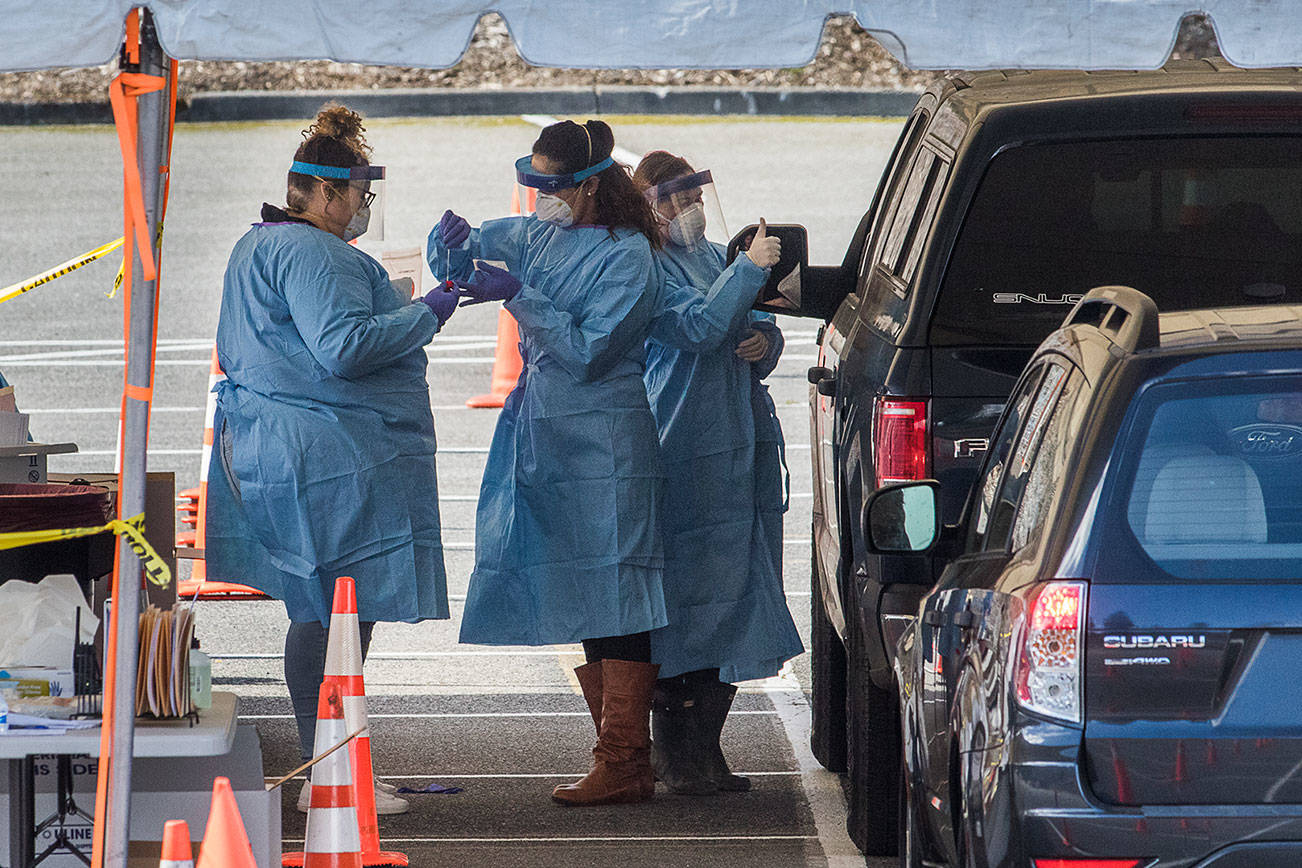EVERETT — A coronavirus test that lets patients swab the front part of their nostril and mid-nose is just as accurate as those given by medical professionals, according to a study led by an infectious disease expert at The Everett Clinic.
The self-swab test was given to nearly 500 symptomatic patients across Washington, including some at multiple Everett Clinic locations. Results were accurate for more than 90% of patients who tested positive for the virus, according to the study coordinated by the University of Washington and UnitedHealth Group.
The study is under peer review for a medical journal, with publication expected soon. Once officially released, the findings will give health departments, hospitals and clinics a game plan for distributing self-sample kits, said Dr. Gerard Cangelosi, a UW professor and co-author of the study.
The results were consistent with current testing methods, such as drive-thrus where health care workers must use personal protective equipment and collect samples from deep inside a patient’s nasal cavity. New approval from the federal government could fast-track the method into mobile testing sites across the country.
“We know that broad, rapid and accurate testing is essential to addressing the COVID-19 crisis, yet the current clinician-administered process significantly limits testing capacity, puts frontline health care workers at risk of COVID-19 exposure and is unpleasant for patients,” said Dr. Yuan-Po Tu, an infectious disease expert at The Everett Clinic who led the study. “Making simple, patient-administered testing widely available will substantially improve testing efficiency while protecting health care workers and preserving urgently needed personal protective equipment, such as face masks, gowns and gloves.”
In addition to the University of Washington and UnitedHealth Group, the Bill and Melinda Gates Foundation and Quest Diagnostics were partners in the study.
At least 64,000 people statewide have been tested for the new coronavirus, according to the state Department of Health.
A self-swabbing method could make testing more efficient locally and across the nation.
In March, the U.S. Food and Drug Administration updated regulations to allow self-administered swab tests for COVID-19 at designated collection sites. Those include drive-thru testing lots.
The FDA’s new rules don’t permit at-home testing, which wasn’t factored into the study.
“That requires a bit more engineering to make that possible,” Cangelosi said. “We need to be sure samples are going to be stable while tests are being mailed and people handle them safely.”
At-home tests could come in the near future, he said.
The study’s self-administered tests don’t require health care workers to wear as much personal protective equipment, which is already in short supply.
Current testing involves pushing a swab back into the nose, almost to the base of the brain. That can trigger sneezing, coughing or gagging.
“That’s uncomfortable and unpleasant for everyone involved,” Cangelosi said.
If patients take their own sample, health care workers would still wear a mask and gloves, he said, but they wouldn’t need a full body suit and face shield.
Last week, counties received pallets of masks, gloves and other gear from the federal stockpile, which was distributed to local hospitals, clinics and long-term care facilities. But there’s still a shortage across the state, Gov. Jay Inslee reiterated on Wednesday.
During a news conference, Inslee called on manufacturers in Washington to pivot to producing medical equipment.
“We have ongoing orders out for supplies from the federal stockpile, but the federal government has not been able to supply them to us fast enough to meet the need,” Inslee said. “We need to seize our own destiny.”
Talk to us
Please share your story tips by emailing editor@kentreporter.com.
To share your opinion for publication, submit a letter through our website https://www.kentreporter.com/submit-letter/. Include your name, address and daytime phone number. (We’ll only publish your name and hometown.) Please keep letters to 300 words or less.

